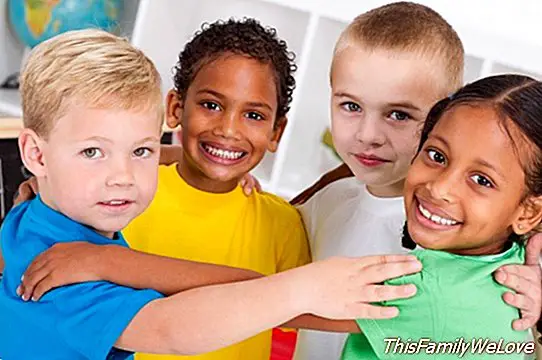Educate in equality: 7 aspects to keep in mind

As parents we have a duty to give the children the same opportunities and it is fair for them to feel the same. This does not mean that educate in equality we should ignore the differentiating characteristics and the needs of each one, we should treat them equally, but taking into account their emotional peculiarities.
At birth, the identity of boys and girls is not only determined by sex; traditionally, it has also been through the process of socialization and education.
The family is the first socializing agent of the boy and the girl and, at the same time, where the traditional roles or stereotypes of men and women can be encouraged and consolidated. However, it can also be one of the main environments in which to educate children equally.
Treating them equally does not mean that there are no differences between boys and girls. The way in which we educate them can have a great influence, especially on the type of opportunities. But it is also true that, generally, giving them the same opportunities the choice they make is different. Not only is it a matter of education, but, genetically, they are different.
7 aspects to take into account to educate on equality
Several spheres of family life will determine, according to the treatment, expectations and roles, the way they behave as well as the role that the child will play in the future. Therefore, we must bear in mind situations such as those listed below:
1. Family models. The saying 'preaching by example' is usually very appropriate. In the traditional family home, the 'housework' was feminine and the masculine 'works' and changing that conception is fundamental when it comes to educating the little ones and the little ones in equality. That men assume tasks that were traditionally linked to women and vice versa will cause children to grow up in an environment in which equality between the sexes is seen as normal. It is important that the division of tasks in the home is explained and that everyone participates in them.
2. Value difference as people and not as sexes. It is normal that children are not treated in the same way; Each person is different and you have to learn that they value that wealth rests in that difference. However, the fact of assessing and appreciating the differences should not be made based on the sex of the person, much less empower them based on it.
3. The expression of feelings. The ability to be more or less expressive of feelings is a purely personal, internal issue of each and nothing has to do that it is a child / man or a girl / woman.
4. The choice of extracurricular activities. Family members should encourage the practice of alternative activities without making distinctions in terms of sex. The skills to perform one or another activity are not determined by the sex of the person who practices them.
5. The language. Family members should avoid using words, popular sayings or sexist comments. It is a sign of sensitivity to the issue at hand and a model of equal treatment.
6. The media. It is advisable that family members sit down with the children and explain what they are seeing on television, in a magazine or in any other means of communication. Some advertising messages often pigeonhole men and women in their traditional roles, and adults must be critical about it. In this way, a responsible attitude is fostered.
7. The reference models closer to the minors will be decisive in the learning of values and attitudes. Do not forget that during the first years the girls and boys are governed by the imitation of their adults. It depends to a large extent on whether these behaviors and ideas are built on an equal basis.
Isabel Martínez
Advice: María Campo. Director NClic-Kimba
Ministry of Education, Culture and Sports of the Government of the Principality of Asturias




